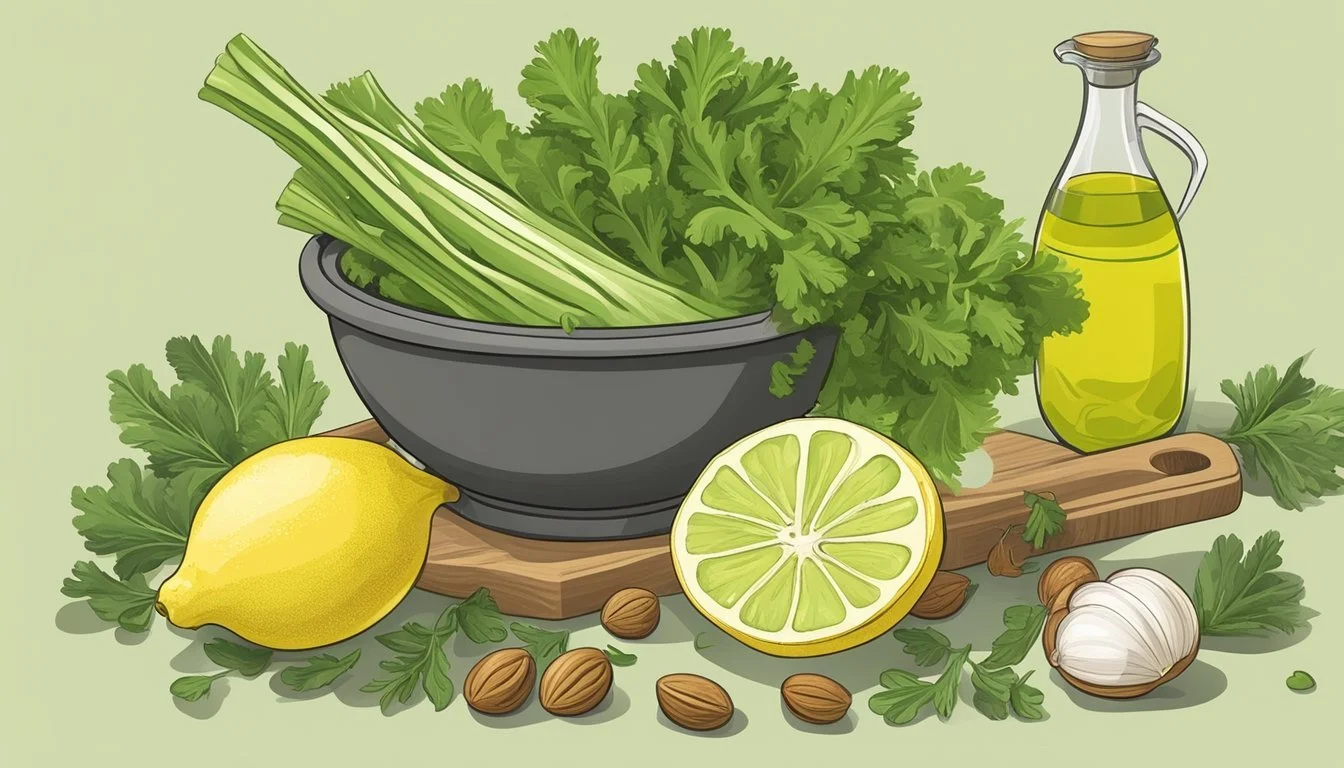Celery Leaf Pesto
Unveiling a Vibrant Twist on the Classic Condiment
Celery leaf pesto is an innovative twist on the classic Italian sauce traditionally made with basil. This variation not only offers a unique flavor profile but also presents a resourceful way of using the often-discarded parts of celery. With its vibrant green hue and aromatic qualities, celery leaf pesto embraces the subtle, slightly bitter taste of celery leaves, enhancing its appeal when paired with a variety of dishes.
The process of creating this pesto is similar to that of its basil-based counterpart, involving a food processor or a mortar and pestle to achieve a fine consistency. While basil provides a sweet and peppery flavor, celery leaves introduce a fresh, herbaceous note to the pesto. By incorporating ingredients such as garlic, cheese, nuts, and good quality olive oil, the spread becomes a harmonious blend that complements pastas, sandwiches, and even acts as a flavor enhancer for soups and salads.
The Essence of Celery Leaf Pesto
Celery leaf pesto transforms the often-discarded tops of celery into a fragrant and herbaceous spread that enhances a variety of dishes. This section explores its origins, health benefits, distinctive taste, and its preparation and usage.
Origins and Culinary Uses
Originating as a resourceful way to use all parts of the celery plant, Celery Leaf Pesto has found its place in modern culinary practices. It serves as a flavorful spread for sandwiches, a robust topping for pizza, and a refreshing addition to salads.
Health Benefits of Celery Leaves
Celery leaves are rich in fiber and essential nutrients, contributing to digestion and overall well-being. Incorporating celery leaves into a pesto harnesses these benefits in a tasty, leafy green condiment.
Distinctive Flavors of Celery Leaf Pesto
Celery leaf pesto is characterized by its sharp, peppery flavor profile, distinguished from traditional basil pesto. The combination of celery leaves, garlic, and lemon juice infuses the pesto with a unique zest.
Comparative Analysis with Traditional Pesto
Compared to traditional pesto, which relies heavily on basil and pine nuts, celery leaf pesto offers a bolder and slightly more bitter taste. This variation is an innovative twist on the classic, introducing new flavors while maintaining the beloved texture of pesto.
Ingredient Spotlight
Greens: Primarily celery leaves, sometimes complemented by basil
Nuts: Pine nuts, cashews, or walnuts offer crunch and depth of flavor
Alliums: Garlic is essential for its punch
Cheese: Grated Parmigiano offers salty, umami notes
Oil: Olive oil binds the ingredients into a cohesive spread
Acid: Lemon juice adds brightness and tang
Salts: Anchors the flavors and enhances the pesto's taste
Preparing Celery Leaf Pesto
To prepare, one must first thoroughly wash and dry the celery leaves. Then, in a food processor, combine the leaves with nuts, garlic, and cheese, pulsing until coarsely chopped. Drizzle in olive oil as the processor runs until the mixture achieves a paste-like consistency. Finally, season with lemon juice and salts to taste.
Serving Suggestions
Celery leaf pesto is versatile in its use. Spread it on warm, crusty bread, swirl it into hot pasta, or dollop it onto grilled meats (What wine goes well with grilled meats?) for added dimension. It's also splendid when stirred into vinaigrettes or spooned over roasted vegetables.
Storage and Preservation
To maintain freshness, store celery leaf pesto in an airtight container in the refrigerator, where it can last for up to a week. For extended storage, pesto can be frozen in an ice cube tray and then transferred to a freezer bag, ready to be used as single-serving flavor boosters.



